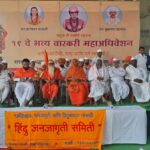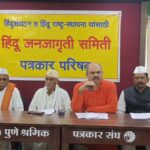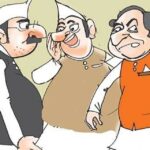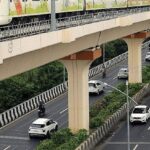“We will strike them inside their territory!” The slogans rang in our ears, patriotism surged through our veins, and the nation braced for decisive action. After the brutal Pahalgam attack that killed 28 innocent Indians, the country was seething with rage. The expectation was clear – this time will be different. No more mere condemnations. No more silence. This time, we were promised results.
Then came Operation Sindoor – thunderous claims, aggressive military posturing, and endless media coverage. But on that very night, Pakistan launched a massive counterattack. 15 Indian soldiers were martyred. 43 were severely injured. Kashmir Commissioner Thapa lost his life. The country was shaken. And the question still echoes: What did we really achieve?
Despite tall claims of surgical strikes, diplomatic isolation of Pakistan, and international pressure, the reality is stark. Hafiz Saeed, Dawood Ibrahim, and the masterminds behind the Pahalgam attack are still roaming free. Not one has been handed over to India. Not even a single condition was placed on Pakistan before declaring a ceasefire. So, what exactly was the point of all this?
To add insult to injury, the United States publicly claimed that the war was halted due to its mediation. Since when did India, the world’s largest democracy with a proud military history, need third-party arbitration in bilateral matters? Where was this “mediation” in 1971, when India liberated Bangladesh and captured 96,000 Pakistani soldiers? Did anyone stop us then?
And while India reeled under grief and loss, Pakistan was granted a loan of ₹8,500 crore. International organizations and countries like China continued to back them. Apart from Israel, not a single country stood firmly with India. What happened to all the strategic partnerships and “global support”?
This so-called ceasefire has not made Pakistan a saint. Ceasefire violations continue at the LoC. Terrorist camps remain active. Our soldiers continue to sacrifice their lives. Anti-India sentiments are still bred across the border. So, what did this ceasefire accomplish? Who benefitted from this war—and who paid the price?
If the government was serious, it could have placed clear conditions: Hand over the Pahalgam attackers. Extradite Hafiz Saeed and Dawood. Shut down terror camps in PoK. Only then will we consider a ceasefire. But that never happened. Because making promises is easy. Fulfilling them is difficult.
Ironically, the same voices that once condemned previous governments for “doing nothing” about Pakistan are now dead silent. They had once claimed that India would wipe Pakistan off the map, that we would “teach them a final lesson.” And yet today, after so many lives lost, all we got was a hollow truce and vague diplomatic statements.
The Indian media, too, has lost its credibility. Reporters stationed in Lahore and Islamabad shouted “Victory!” and returned home quietly when the truth unfolded. Who will now inform the people? Who will ask the tough questions?
Yes, the war may have stopped, but there is a painful realization — we didn’t win this war, we lost it. And worse, we’re not even allowed to grieve or question it.
In conclusion:
“Breaking a hostile nation into two, capturing 96,000 soldiers, forcing a peace treaty — these are not feats within the capability of our current leadership. That was a different era. A different India.”
- PRATIK GANGANE, PUNE (EDITOR PUNE PRAHAR)
- 7276314142










